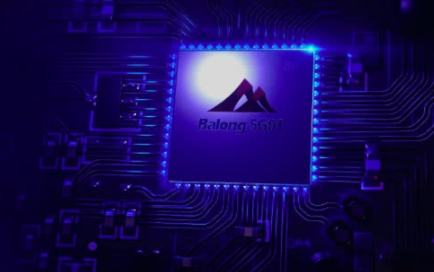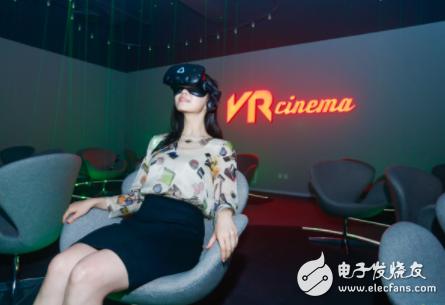The evolution of 3G and 4G has significantly advanced the mobile internet, creating a foundation for more connected experiences. With the massive connectivity that 5G offers, we are witnessing the dawn of an era where everything is interconnected, accelerating the Internet of Things (IoT) revolution. 5G isn't just about faster speeds—it's about enabling a world where every device can communicate seamlessly. This transformation is giving rise to IoT cloud platforms across various industries, unlocking new opportunities and generating unprecedented value.
As 4G begins to fade into the past, the 5G era is rapidly approaching. Countries around the globe are investing heavily in 5G technology, with commercial deployment progressing faster than expected. This year alone, billions of dollars are being poured into 5G research and development by operators, communication companies, and tech giants. At events like the Mobile World Congress (MWC), 5G, IoT, and artificial intelligence have become central themes. With collaboration from chipmakers, network providers, and equipment manufacturers, the path to a fully intelligent future is accelerating.
As the 5G era unfolds, it will not only trigger a new wave of mobile transformation but also drive society toward digitalization. Operators, chipmakers, and communication companies are actively planning their 5G strategies, increasing investments to stay competitive. For example, ZTE recently announced plans to raise up to 13 billion yuan to invest in 5G technology R&D, aiming to build a comprehensive 5G terminal ecosystem. Huawei also committed 5 billion yuan in 2018 for 5G R&D, with plans to launch 5G smartphones in 2019.

Huawei, the world’s leading provider of network equipment, is dedicated to building a smart world of the Internet of Everything. It is actively promoting the development of NB-IoT, 5G, cloud computing, and AI technologies. In particular, Huawei has been focusing on 5G communication, launching its 5G commercial chip Barong 5G01 ahead of MWC2018 and introducing commercial terminals based on this chip.
Nokia, once the dominant player in mobile phones, has successfully transformed itself into a key player in 5G and IoT. After shifting its focus, Nokia saw significant improvements in sales and profits. Leveraging 5G and IoT, the company achieved a remarkable turnaround in 2017, demonstrating how strategic investment in emerging technologies can reshape an entire business.
5G is more than just a speed upgrade—it opens the door to a fully connected world. By combining 5G with cloud computing and AI, we are moving toward a smart society where everything is interconnected and perceived. Supporting hundreds of billions—perhaps even trillions—of connections, 5G acts as a powerful enabler for the IoT. This includes immersive VR experiences, smart living, and, most notably, autonomous vehicles, which are expected to be one of the biggest applications of 5G.
In the age of massive connectivity, the sheer volume of data generated by the Internet of Everything requires intelligent cloud platforms to analyze and extract value. As a result, software and platform providers are becoming key players in the IoT ecosystem. Companies like General Electric (GE) have launched industrial IoT platforms such as Predix, connecting people, machines, and data. GE’s transformation into a digital enterprise has driven a global industrial revolution, positioning it among the top companies that have changed the world according to Fortune magazine.
Nokia has also introduced the IMPACT management platform, designed to support large-scale IoT deployments. Through this platform, customers can easily implement IoT applications like smart lighting, transportation, and autonomous driving. With over 1.5 billion devices managed securely, Nokia has won recognition for its end-to-end IoT solutions, including support for various LPWAN technologies.
With the arrival of 5G, AR and VR technologies are set to gain momentum. Apple and Google have both been pushing forward with AR development tools like ARKit and ARCore, allowing millions of users to experience augmented reality. The 2018 PyeongChang Winter Olympics showcased the power of 5G in delivering immersive VR experiences, with Intel and KT providing real-time 5G-enabled virtual reality content for sports events.

Driverless cars are now at the forefront of innovation. Tech companies are leading the charge, reshaping the automotive industry. However, experts like Yang Jianyong point out that achieving large-scale autonomous driving still faces challenges, particularly in terms of ultra-low latency and high reliability. Wu Gansha, CEO of a tech firm, outlined three stages of 5G-enabled autonomous driving, from limited cooperation between manned and unmanned vehicles to full coordination across cities, potentially eliminating traffic congestion and accidents.
As the IoT era approaches, next-generation wireless technology like 5G is essential for supporting the vast number of connected devices. Intel, a major chipmaker, is actively working on 5G solutions for autonomous vehicles, partnering with companies like Toyota. In November last year, Intel conducted the first live road test of its 5G car platform in Tokyo, transmitting gigabit data in real time and setting a new milestone in 5G technology.
In conclusion, 5G is more than just a communication advancement—it's the foundation for the Internet of Everything. From smart cities to smart homes, from autonomous vehicles to industrial automation, 5G is enabling a more connected, efficient, and intelligent world. With low power consumption and ultra-low latency, 5G is paving the way for a future where everything is interconnected, and the era of the Internet of Everything is here to stay.
Harvester Guide Wheel,Conveyor Roller Guide,Ceramic Guide Roller,Grade Tractor Tires
Changzhou Youeryou Trading Co., Ltd. , https://www.farmpartssupplier.com